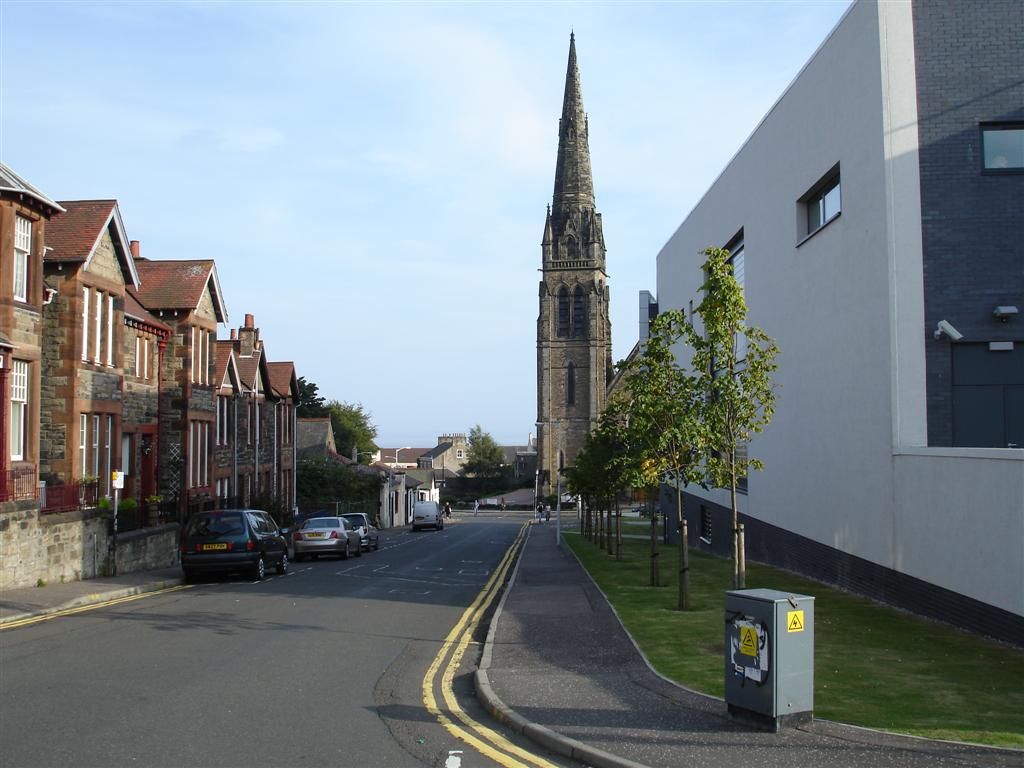Towards the end of the 11th century, Malcolm III purchased the land around the modern town to gift to the monks of the Holy Trinity (now known as Dunfermline Abbey) to fund for the building of their new church. A linear settlement began to form around a harbour on the East Burn. Early industries which soon prospered in the town included the production of textiles, nail-making and salt panning. The passing of feu-ferme status in the middle of the 15th century meant the town became semi-independent from the monks of Dunfermline Abbey. Full independence was achieved by a charter for royal burgh status granted by Charles II in 1644.
During the late 19th century, the town became a prosperous centre of linoleum. Originally developed in the town as floorcloth, this was quickly dominated by the Michael Nairn & Co but did not become popular across a worldwide scale until the beginning of the 20th century. Other industries such as coal, flour, malt, printing, light electrical engineering and furniture manufacturing rose in prominence.
After the Second World War, a plan saw new housing estates being built to the north-west of the town along with multi-storey flats and the redevelopment of older areas such as Gallatown, Sinclairtown and Pathhead. The population of the town was expected to reach between 55,000 and 70,000, but this was shattered when the production of linoleum declined in the middle of the 1960s.

"Make the robe of the ephod entirely of blue cloth, with an opening for the head in its center. There shall be a woven edge like a collar around this opening, so that it will not tear. Make pomegranates of blue, purple and scarlet yarn around the hem of the robe, with gold bells between them. The gold bells and the pomegranates are to alternate around the hem of the robe. Aaron must wear it when he ministers. The sound of the bells will be heard when he enters the Holy Place before the LORD and when he comes out, so that he will not die.
"Make a plate of pure gold and engrave on it as on a seal:HOLY TO THE LORD. Fasten a blue cord to it to attach it to the turban; it is to be on the front of the turban. It will be on Aaron's forehead, and he will bear the guilt involved in the sacred gifts the Israelites consecrate, whatever their gifts may be. It will be on Aaron's forehead continually so that they will be acceptable to the LORD.
"Weave the tunic of fine linen and make the turban of fine linen. The sash is to be the work of an embroiderer. Make tunics, sashes and headbands for Aaron's sons, to give them dignity and honour. After you put these clothes on your brother Aaron and his sons, anoint and ordain them. Consecrate them so they may serve me as priests.
"Make linen undergarments as a covering for the body, reaching from the waist to the thigh. Aaron and his sons must wear them whenever they enter the Tent of Meeting or approach the altar to minister in the Holy Place, so that they will not incur guilt and die.
"This is to be a lasting ordinance for Aaron and his descendants. (Exodus 28.31-43)
Who is this with garments gory,
Triumphing from Bozrah’s way;
This that weareth robes of glory,
Bright with more than victory’s ray?
Who is this unwearied comer
From his journey’s sultry length,
Traveling through Idumè’s summer
In the greatness of his strength?
Wherefore red in thine apparel
Like the conquerors of the earth,
And arrayed like those who carol
O’er the reeking vineyard’s mirth?
Who art thou, the valleys seeking
Where our peaceful harvests wave?
“I, in righteous anger speaking,
I, the mighty One to save.”
“I, that of the raging heathen
Trod the winepress all alone,
Now in victor garlands wreathen
Coming to redeem Mine own:
I am He with sprinkled raiment,
Glorious for My vengeance hour,
Ransoming, with priceless payment,
And delivering with power.”
Hail! All hail! Thou Lord of Glory!
Thee, our Father, Thee we own;
Abraham heard not of our story,
Israel ne’er our Name hath known.
But, Redeemer, Thou hast sought us,
Thou hast heard Thy children’s wail,
Thou with Thy dear blood hast bought us:
Hail! Thou mighty Victor, hail!
Bishop A Cleveland Coxe (1818-1896)

No comments:
Post a Comment